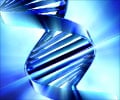New method offers the ability to decode epigenetic marks on DNA from small and transient populations of cells in order to determine whether the DNA is coming from a specific tissue or even a tumor.

‘Scientists have investigated DNA modifications over the last two decades to better understand and diagnose an array of disorders, most notably cancer. ’





"We're hopeful that this method offers the ability to decode epigenetic marks on DNA from small and transient populations of cells that have previously been difficult to study, in order to determine whether the DNA is coming from a specific tissue or even a tumor." said co-senior author Rahul Kohli, MD, PhD, an assistant professor of Biochemistry and Biophysics, and Medicine. For the last several decades, the major methods used to decipher the epigenetic code have relied on a chemical called bisulfite. While bisulfite has proven useful, it also presents major limitations: it is unable to differentiate the most common modifications on the DNA building block cytosine, and more significantly, it destroys much of the DNA it touches, leaving little material to sequence in the lab.
The new method described in this paper builds on the fact that a class of immune-defense enzymes, called APOBEC DNA deaminases, can be repurposed for biotech applications. Specifically, the deaminase-guided chemical reaction is able to achieve what bisulfite could do, but without harming DNA.
"This technological advance paves the way to better understand complex biological processes such as how the nervous system develops or how a tumor progresses," said co-senior author Hao Wu, PhD, an assistant professor of Genetics. Kohli's graduate student Emily Schutsky is first author on the study.
Using this method, the team showed that determining the epigenetic code of one type of neuron used 1,000-times less DNA than required by the bisulfite-dependent methods. From this, the new method could also differentiate between the two most common epigenetic marks, methylation and hydroxmethylation.
Advertisement
Source-Eurekalert











